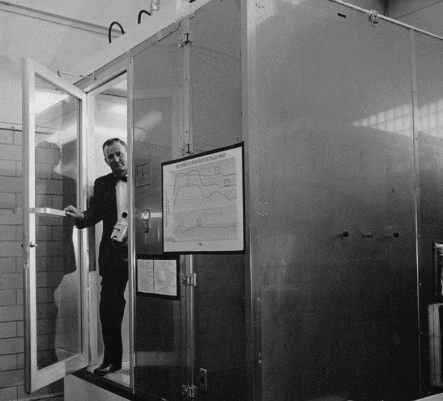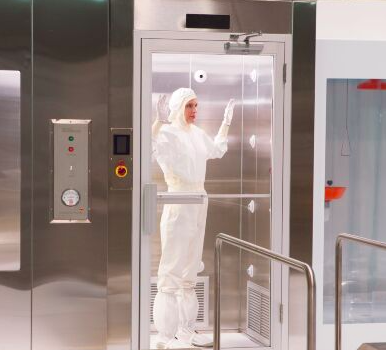The fields of biotechnology and life sciences are experiencing a period of unprecedented growth and innovation, largely due to the advent of advanced technologies such as machine learning and artificial intelligence. These technologies are not only enhancing research and development but are also revolutionizing the way we approach healthcare, agriculture, and environmental conservation. In this article, we will explore the latest advancements in biotechnology and life sciences, how machine learning is playing a pivotal role, and the impact of state-of-the-art facilities like the ECU Life Sciences and Biotechnology Building.
The Intersection of Biotechnology and Machine Learning
Machine learning, a subset of artificial intelligence, is making significant strides in the field of biotechnology. By analyzing vast datasets that would be impossible for humans to process manually, machine learning algorithms can identify patterns and insights that lead to breakthroughs in drug development, genetic analysis, and personalized medicine.
Accelerating Drug Discovery and Development
One of the most notable advancements in biotechnology is the application of machine learning to drug discovery and development. By leveraging algorithms, scientists can predict how different drugs will interact with targets in the body, potentially reducing the time and cost associated with bringing new medications to market. This is particularly significant in the development of treatments for diseases that have long eluded the medical community.
Personalized Medicine and Genetic Engineering
Machine learning is also instrumental in the field of personalized medicine. With its ability to process and analyze genetic information, it enables the customization of healthcare, with treatments and medications tailored to the individual’s genetic makeup. Genetic engineering, too, has benefited from machine learning, allowing for more precise modifications and the potential to cure genetic disorders.
Environmental and Agricultural Biotechnology
In the realms of agriculture and the environment, machine learning aids in creating more resilient crop varieties, optimizing farming practices, and managing ecosystems more effectively. These advancements contribute to food security and sustainable environmental practices, which are critical challenges of our time.
ECU Life Sciences and Biotechnology Building: A Hub of Innovation
East Carolina University (ECU) has recognized the importance of fostering research and innovation in these fields with the establishment of the Life Sciences and Biotechnology Building. This state-of-the-art facility serves as a hub for interdisciplinary research, bringing together experts from various fields to collaborate on cutting-edge projects.
A Catalyst for Research and Collaboration
The ECU Life Sciences and Biotechnology Building is designed to be a catalyst for both research and collaboration. With advanced laboratories and equipment, researchers can conduct high-level experiments that push the boundaries of what’s possible in biotechnology and life sciences. This collaborative environment encourages the exchange of ideas and the formation of partnerships that can lead to new discoveries and innovations.
Preparing the Next Generation of Scientists
Education is a core mission of the ECU Life Sciences and Biotechnology Building. By providing students with access to modern labs and technology, ECU is preparing the next generation of scientists and researchers to continue advancing the field. Students have the unique opportunity to work alongside seasoned experts on real-world projects, gaining invaluable experience that will serve them in their future careers.
The Future of Biotechnology and Life Sciences
As we look to the future, the potential of biotechnology and life sciences seems boundless. With machine learning and artificial intelligence becoming increasingly sophisticated, we can expect to see continued progress in areas such as disease prevention, sustainable resource management, and the enhancement of human health and longevity.
The Role of Public and Private Partnerships
To fully realize the potential of these advancements, public and private partnerships will play a crucial role. Combining the expertise and resources from both sectors can accelerate research, provide funding for new initiatives, and facilitate the commercialization of innovative products and therapies.
Ethical Considerations and Public Engagement
As we advance in biotechnology and life sciences, ethical considerations must be at the forefront. The implications of genetic engineering, data privacy, and the equitable distribution of benefits are just a few of the issues that require thoughtful dialogue and regulation. Engaging the public in these conversations ensures that the development of biotechnology aligns with societal values and needs.
Conclusion
The advancements in biotechnology and life sciences represent a new frontier in human innovation. With the integration of machine learning, the potential for transformative discoveries and applications in healthcare, agriculture, and environmental conservation is immense. Facilities like the ECU Life Sciences and Biotechnology Building are critical in supporting this wave of innovation and ensuring that we continue to push the boundaries of what’s possible.
By fostering collaboration, investing in education, and addressing ethical concerns, we can harness the power of biotechnology and life sciences to create a brighter, healthier future for all. As we continue to explore the capabilities of machine learning and other technologies, we stand on the cusp of a new era in scientific discovery that promises to change the world in profound ways.




